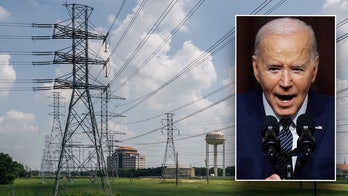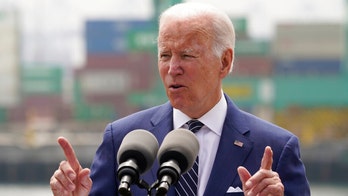On Debt, Dems Work to Narrow Discussion; Public-Private Partnerships in the Crosshairs; Cain versus Krauthammer
Dems Take Risk in Opposing Balanced Budget Amendment
“Unfortunately, I did not contemplate the irresponsibility that I have seen fiscally where Republicans took America to the brink of default and placed the confidence of the world in America’s fiscal judgment at question.”
-- House Minority Whip Steny Hoyer explaining to reporters why he now opposes a balanced budget amendment, a measure he voted for in 1995.
Whatever happened to the balanced budget amendment?
Like term limits and “virtual town halls,” the idea of a BBA faded from Washington when the electorate’s Perotist, independent fever finally broke more than a decade ago.
Republicans made the president’s $2.1 trillion debt-ceiling increase conditional on, among many other tripwires and blame-avoidance measures, a vote on a balanced budget amendment. But it’s mention seemed somehow anachronistic, like suddenly cueing up some Milli Vanilli.
But it makes sense that the BBA would matter to House Republicans, since it was the very same anti-establishment outrage that fueled the original movement that was eventually channeled into the 2010 remodeling of the GOP and subsequent midterm electoral wave.
Few have dared to say the words “term limits” yet, perhaps because that phrase may be one of the most potent in the political lexicon. Voters love the idea and politicians hate it with a white-hot passion. Remember that former House Speaker Tom Foley lost his Washington State seat in 1994 in large part because a led lawsuit to roll back a state constitutional amendment there imposing term limits on members of Congress. The Supreme Court eventually ruled that states could not impose federal term limits.
It’s hard to remember now, but term limits were a central part of the 1994 “Contract with America” and once had nearly unanimous Republican support. Many incumbent GOPers came to gradually oppose the idea on the grounds that it would deprive voters of the chance to elect the best, most qualified candidates, namely themselves.
But, like Texas Gov. Rick Perry proposing to make Congress a part-time body and slashing lawmakers’ pay, ideas for placing external constraints on the power and conduct of Congress continue to resonate.
There are arguments on the left and right against the idea of a balanced budget amendment, just as there are many kinds of measures that would meet that definition.
The most rigorous would cap federal spending at revenues and forbid borrowing without supermajority votes. The version that passed the House in 1995 and came one vote short in the Senate required 3/5ths majorities in both houses of Congress to spend more than the government took in.
This is the pure form of the concept – a cap on spending that sets obstacles to increasing the government’s income.
But there are liberal varieties, like the one backed by Democratic Colorado Sen. Mark Udall, which is a balanced budget amendment that would restrict tax decreases for top earners and shield entitlement programs. There are also conservative addendums, like provisions that make it harder to raise taxes stemming from fears that hard-pressed Congresses of the future would resort to tax increases to save pet projects.
The reasons for the ebbing of the idea of a balanced budget amendment, once one of the hottest tickets in politics and with substantial support from Democrats, are many.
The dawn of the era of al Qaeda squelched much of the Republican drive for small, austere government. How else to explain a party that could nearly push through a balanced budget amendment and a law providing free prescription drugs to old people in the span of eight years?
And the formerly wide streak of fiscal conservatism among Democrats has turned into a tiny vein as the party has moved dramatically to the left. Maryland Democrat Rep. Steny Hoyer is a great example. Hoyer, having once been a Blue Dog champion of the measure, now opposes it on the grounds that the economy is too fragile to not have massive deficit spending.
Hoyer also blames Republicans for his shift, saying their opposition to tax increases has exceeded his expectations and that it would put the credit of the nation at risk. The legislation Hoyer voted for in 1995 and the measure that House Republicans will offer up this week both have measures to allow borrowing to pay off existing debts.
Power Play submits that the Democratic shift toward hard Keynesian economics – the embrace of a subsidy and federal spending driven model – has more to do with it. Hoyer’s caucus is much more liberal than it was in the days of southern Blue Dogs and Clintonian triangulation.
The House GOP has settled on a softer version of the amendment to put forward this week, with checks on tax increases and only a two-thirds majority required to take on new debt. It is expected to have wide Republican support and near-universal Democratic opposition. President Obama opposes the measure on the grounds that he believes Congress should work together to give everyone everything they want without having arbitrary restrictions on how to obtain it.
Democrats are instead working to keep the focus on the small-bore, procedural battle over the debt-ceiling supercommittee as if the fate of the republic depended on the difference of a few hundred billion dollars of cuts to the increase in future deficit spending over a decade.
Obama is guaranteed his next debt ceiling increase of $1.2 trillion. How the out-year forecasts of deficit spending are jiggered to compensate of that borrowing today is a relatively small thing. These abstruse triggers and rule-making mumbo jumbo, which self-centered lawmakers believe will matter so much to voters are largely ignored. A government shutdown or default, yes. Which trigger triggers the trigger for 2022 tax revenue estimates, no.
The question for the Blue Team is how to avoid electoral anger on the big stuff, which includes the easy to understand balanced budget amendment. The angry independent streak is back in a big way and Republicans may make Democrats who oppose such measures pay a hefty price.
What’s the Matter With Public-Private Partnerships?
“[Department of Energy officials] did push very hard for us to hold our announcement of the consolidation to employees and vendors to Nov. 3rd — oddly they didn’t give a reason for that date.”
-- Internal email from primary private investor in bankrupt solar firm Solyndra obtained by House investigators explaining pressure to delay the announcement of layoffs until the day after the 2010 midterm elections.
When Democrats talk about the Solyndra green-energy loan scandal, they make very specific arguments about the revenue estimates of the company and the fact that politically connected beneficiaries of the loan also happened to be the very best people in the field of anti-global warming industry.
Their argument is that this half-billion loan was a bust because of case-specific errors made by some individuals (Can you hear the footsteps yet Secretary Steven Chu?). The purpose of this argument is to protect the cherished idea of public-private partnerships.
Bill Clinton’s new book is a paean to public-private ventures of the European and Asian kind in which governments and businesses work together to innovate, employ and grow. President Obama too speaks with envy of foreign nations like China where public works projects and business endeavors go hand in hand.
This is not a new idea. The concept of government creating cartels of favored business ventures dates back millennia from the imperial provisions of Rome to the corporate-approved governance of South Korea.
The Democratic beau ideal of this kind of entrepreneurial government and government-approved entrepreneurship is badly threatened, though, by the ongoing green energy scandals and other persistent problems.
For example, bankrupt bonus payers Fannie Mae, Freddie Mac and the rapidly failing FHA, continue to stoke Republican complaints not about how the agencies are run, but that they exist at all. If Fannie and Freddie have never been run right, ask Republicans, why should we believe they will ever be run right?
Republicans dabble in the partnership model all the time, on scales large (TARP) and small (having businesses help write the legislation that regulates them). But the partnership model is far more central to the Democratic plan.
That’s why the litany of bad news about the partnership model (political shading of green energy stimulus loans, the numerous immolations of Chevy Volts, the government mortgage debacles, etc.) is of such worry to Democrats.
If the partnership model is discredited, they have more to lose than the GOP.
And Now, A Virtual “Center Seat” Moment
“Remember, if you're being asked seven or eight different questions on seven or eight different topics and then all of a sudden someone switches to Libya, and they're not clear with the question, before I shoot from the lip, I gather my thoughts, that's all that was, whatever people want to think of it, I can't change that."
-- Herman Cain talking to reporters about his confused answer to the Milwaukee Journal-Sentinel about the Libyan civil war.
“It was a very long pause. And to say ‘I was thrown eight questions on different topics’ is not a great defense. If you are a candidate for the presidency you have to answer 50 different topics. Everybody is asking different questions all the time.
And to say that it was a question that wasn't clear, he was asked whether he agreed with Obama's handling of Libya. That is not a gotcha question.”
-- Charles Krauthammer on “Special Report with Bret Baier.”
Chris Stirewalt is digital politics editor for Fox News, and his POWER PLAY column appears Monday-Friday on FoxNews.com.




